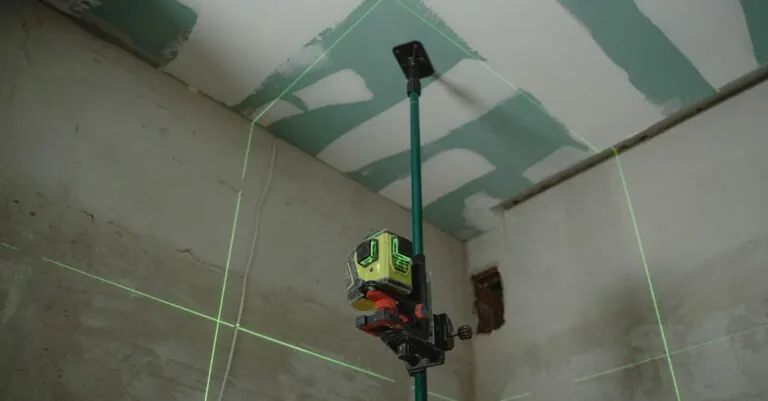When your iCUE installation decides to throw a tantrum, it can feel like your gaming dreams are on pause. Don’t worry though; this isn’t the end of your RGB-lit adventures! With a few simple steps, you can get your setup back on track and shining brighter than ever.
Table of Contents
ToggleUnderstanding iCUE Installation Issues
Issues during iCUE installation impact performance, causing frustration for users. Understanding these common problems and their symptoms helps expedite resolutions.
Common Installation Problems
Installation errors often arise due to outdated software. Users might encounter conflicts between different versions of iCUE or driver software from other peripherals. Network issues can also interrupt the download process. Missing files or corrupted downloads frequently lead to incomplete installations. Sometimes, improper permissions on certain system folders hinder successful setup. Recognizing these common installation problems assists in effective troubleshooting.
Symptoms of a Faulty Installation
Signs of a flawed installation include unresponsive RGB lighting. Devices might not be recognized by iCUE, preventing proper configuration. Lagging performance in peripherals often indicates underlying issues. Inconsistent functionality across different devices further points to installation errors. Users may also notice error messages during startup, signaling problems with the iCUE software. Identifying these symptoms quickly allows for prompt and effective fixes.
Step-by-Step Guide to Repair Installation of iCUE
Follow these steps to effectively repair the installation of iCUE and restore your gaming experience.
Preparing Your System
Before making any changes, ensure your system meets the iCUE requirements. Users should check for conflicting software installed on their computers. Closing unnecessary applications helps avoid potential interruptions. Additionally, temporarily disabling antivirus software allows for a smoother installation process. Compatibility with Windows versions must also be verified for efficient troubleshooting.
Uninstalling the Current Version
Begin the uninstallation process by accessing the Control Panel. After navigating to Programs and Features, locate iCUE in the list. Selecting the program prompts an option to uninstall it. Following the prompts removes the current version, including associated files. Restarting the computer after uninstallation clears residual files and prepares the system for a fresh installation.
Installing iCUE from Scratch
Download the latest version of iCUE from the Corsair website. By selecting the correct file for your operating system, users ensure compatibility. Double-clicking the downloaded file initiates the installation wizard. Following the installation wizard leads to the configuration settings. Completing the setup involves restarting the computer once installation is finished.
Verifying Installation Success
After installation, open iCUE to confirm it functions properly. Upon launching the application, check if connected devices are recognized. Users may also observe RGB lighting synchronization to ensure functionality. Conducting a stress test by adjusting settings confirms performance integrity. If issues persist, reviewing installation logs helps identify installation errors.
Advanced Troubleshooting Tips
Advanced troubleshooting steps improve iCUE installation reliability and overall performance. These tips help users identify and rectify issues effectively.
Checking System Compatibility
Compatibility verification is crucial for iCUE functionality. Users must confirm that their system meets the minimum requirements specified by Corsair. Operating system version should align with the latest iCUE software. Hardware specifications like CPU, RAM, and GPU also play an essential role in smooth operation. Additionally, users should check for compatibility with connected peripherals. Some devices may require specific drivers or software versions to operate correctly with iCUE. Ensuring these elements are correctly configured can prevent future issues.
Updating Drivers and Software
Keeping drivers and software up-to-date enhances iCUE performance. Users should regularly check for updates to their graphics card, motherboard, and peripheral drivers. These updates often resolve existing bugs and enhance compatibility. In addition to drivers, ensuring iCUE is the latest version is vital. Regularly visiting the Corsair website allows users to download the most recent software. Installing these updates may fix unrecognized devices and other performance-related issues. Active management of system updates optimizes the user’s gaming experience and enhances device functionality.
Seeking Professional Help
If troubleshooting fails to resolve installation issues with iCUE, seeking professional help becomes a viable option. Technicians possess the expertise to handle intricate software problems that may not be easily identifiable. When difficulties persist, professionals can perform comprehensive diagnostics to pinpoint underlying issues.
Consider contacting Corsair’s customer support for assistance. Their representatives are knowledgeable about specific iCUE concerns and can offer tailored solutions. Clear communication of the symptoms enables support agents to diagnose the problem effectively.
In some instances, local computer repair services may assist in resolving complex installation problems. These technicians can provide hands-on support that ensures systematic troubleshooting. Verifying their experience with iCUE or Corsair products adds another level of reassurance.
Online forums and communities often feature tech enthusiasts and experts who share valuable insights. Engaging with these platforms might yield solutions from users who faced similar issues. Sharing experiences and solutions can accelerate the repair process.
While professional help may incur costs, solving persistent issues benefits overall performance and user experience. Weighing the expense against the value of a fully functioning setup can guide the decision. Utilizing professional services ensures confidence that iCUE operates properly and meets performance expectations.
Feedback from professional consultations enables users to learn about potential preventative measures. Gaining insights can help avoid similar issues in the future. Ultimately, when DIY solutions fail, turning to professionals often leads to successful resolutions.
Repairing the installation of iCUE can significantly enhance the gaming experience by restoring functionality and performance. By following the outlined steps and troubleshooting tips, users can effectively address common installation issues. Ensuring system compatibility and keeping software up-to-date are essential for smooth operation. If problems persist despite these efforts, seeking professional assistance can provide a reliable solution. Proper communication with support teams or local technicians can lead to effective resolutions. With the right approach, users can enjoy a fully functional iCUE setup and elevate their gaming to the next level.



